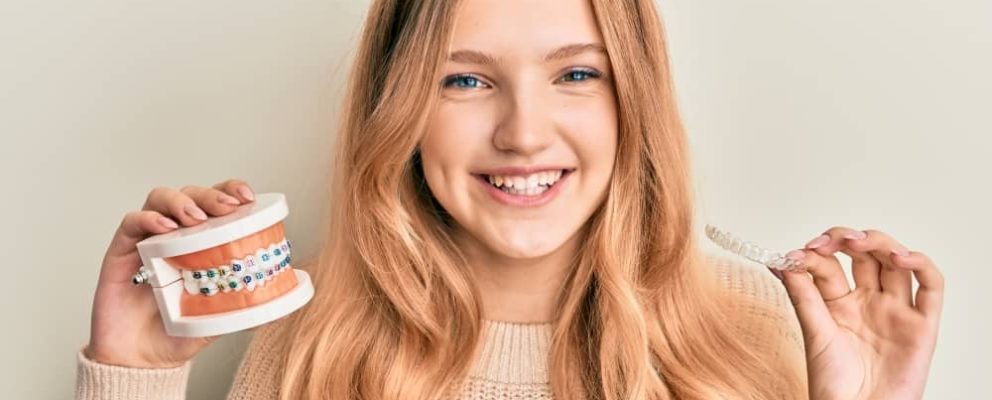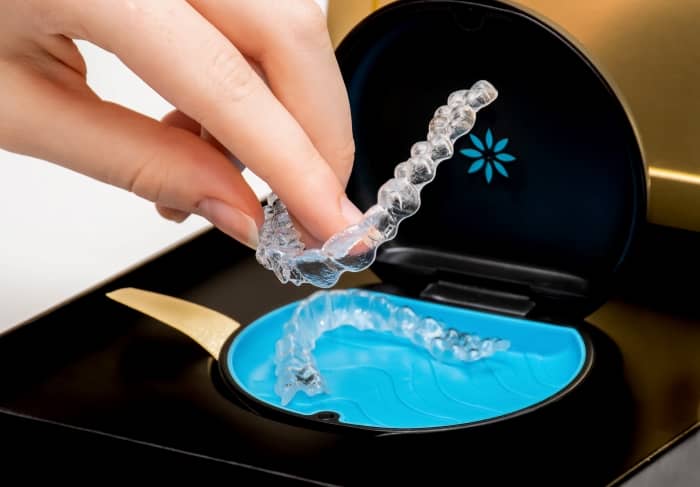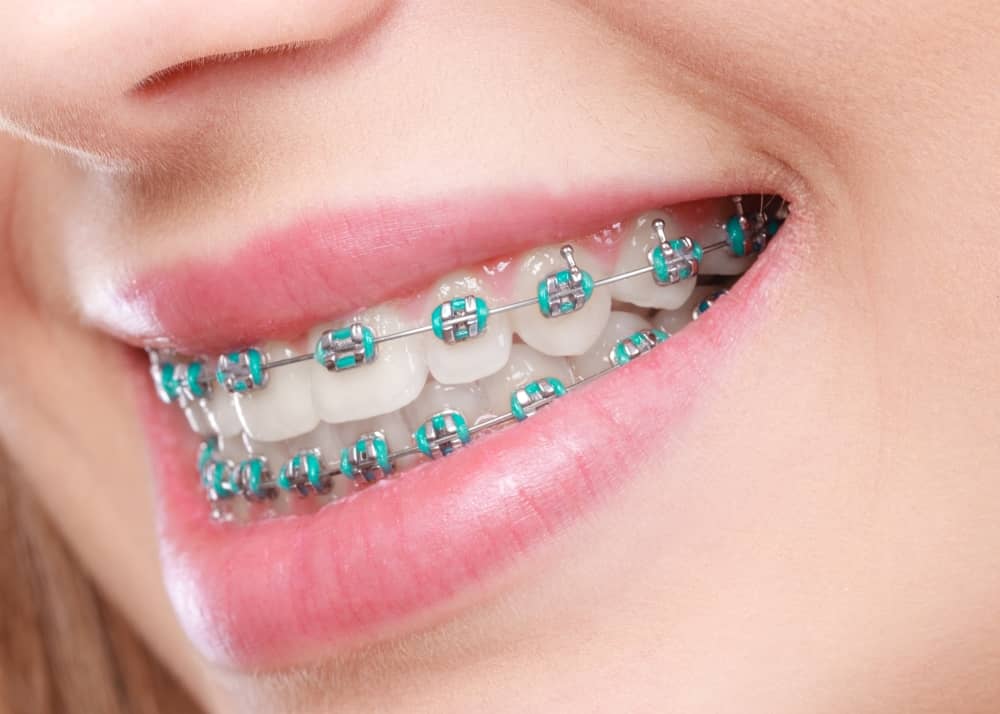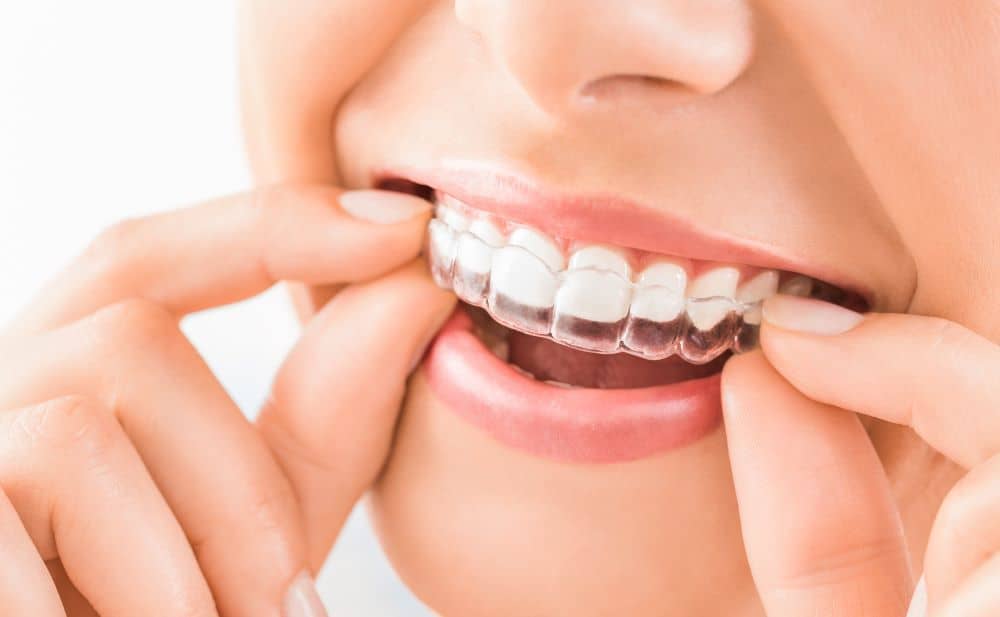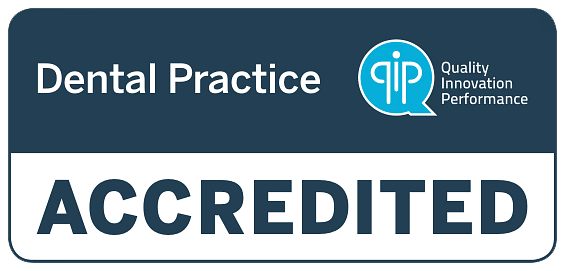If you want to straighten your teeth, you’ve probably wondered which is better: traditional braces or Invisalign?
Choosing between traditional braces or Invisalign depends on many factors, including budget, lifestyle, and treatment goals.
Here, we’ll take an in-depth look at the pros and cons of braces vs. Invisalign to help you choose the best option for you.
What is Invisalign?
Invisalign is a system that involves clear aligners that slowly move teeth into the correct position. The aligners are created in a lab based on a 3D mould of your mouth and teeth.
What Are Braces?
Traditional braces involve metal brackets and wires. The brackets are glued to teeth and connected with wires. The wires are tightened every few weeks to shift the brackets and move teeth into place.
Related Reading: All There Is To Know About Braces
Braces vs. Invisalign – Which Should I Choose?
Both metal braces and Invisalign work to straighten teeth by adjusting their position in small increments. Along with a straight smile, proper tooth position helps prevent decay and shifting issues that can lead to oral health complications down the road.
Here is a look at the pros and cons of braces and Invisalign.
What Are the Benefits of Invisalign?
- Easy Care and Better Oral Hygiene — Since you can take the aligners out when you brush your teeth, clear aligners are extremely convenient and easy to care for. Rather than trying to brush around metal brackets, you can remove the aligners and still brush and floss as normal. This makes it easier to brush and floss properly to keep your teeth healthy and prevent decay.
- Appearance — Perhaps the biggest reason people choose Invisalign over braces is appearance. Unlike metal braces, Invisalign treatment is discrete and invisible.
- No Discolouration — Some patients report discolouration after traditional metal brackets are removed, especially if they often drink tea or coffee. Since you can brush and floss normally with Invisalign, you can clean your teeth evenly and properly throughout treatment and reduce your risk of discoloured areas.
- Eat Your Favourite Foods — Metal brackets can be damaged by hard or sticky foods, meaning brace wearers need to avoid chewing gum or eating certain foods. Since the clear aligners can be taken out to eat, you can still enjoy your favourite foods, including gum or popcorn.
- Fewer Visits — With Invisalign treatment, much of the work is completed ahead of time. Once the 3D scan of your mouth and teeth is completed, your customised aligners are created in a lab. Every few weeks, you’ll switch to a new set of aligners to continue adjusting your teeth in minor increments. This decreases the need for visits, keeps visits short, and results in minimal disruption to your daily life.
- Comfort — Both traditional braces and Invisalign straighten teeth by moving teeth in slight increments. Whether you choose Invisalign or braces, these adjustments can cause discomfort. However, Invisalign users often report the aligners are comfortable to wear since they are moulded exactly to their mouth and teeth. Invisalign treatment also results in fewer problems with the mouth and gums compared to traditional metal brackets that can cut the insides of the cheeks.
What Are the Disadvantages of Invisalign?
- Discipline — The clear aligners must be worn at least 22 hours a day to ensure the teeth are being shifted properly. It is up to you to ensure you adhere to wearing your aligners for the proper amount of time. If the aligners are not worn enough, results will be negatively affected.
- Cost — Invisalign treatment is typically more expensive than traditional braces. However, this depends on the time of treatment and your treatment goals. In many cases, the cost of Invisalign vs. braces is similar. To find out exactly how much Invisalign will cost, please schedule a consultation with us.
What Are the Advantages of Traditional Braces?
- Nothing to Remember — Since braces are glued directly to the surface of the teeth, you do not need to remember to take them out or put them back in.
- Comprehensive Treatment Options — For difficult cases and certain conditions, traditional braces may be the only option.
What Are the Disadvantages of Braces?
- Appearance Concerns — Braces — even clear ones — are more noticeable than Invisalign. Many adults and teens prefer the discrete appearance of Invisalign compared to traditional braces.
- More Difficult to Practice Proper Oral Hygiene — Because braces are secured directly to the teeth, they cannot be removed for brushing and flossing. It can be difficult to clean properly around the brackets.
- Higher Maintenance — Great care needs to be taken when cleaning teeth or while eating to ensure that the brackets do not become damaged.
- More Frequent and Longer Visits — Traditional braces require more frequent visits so the wires can be tightened and adjusted. These visits also take longer compared to switching to a new set of clear aligners at your Invisalign appointment.
- Irritation — Traditional metal braces involve metal wires and brackets that can cause irritation to the cheeks or even cut the inside of the cheeks with sharp edges.
- Discolouration — Since it is more difficult to clean traditional braces thoroughly, the discolouration can form around the areas where the brackets attach to the teeth.
- Eating Limitations – Certain foods are difficult to eat due to the metal brackets involved with braces. Sticky or hard foods can break a bracket off or snap a wire. Because of these risks, brace wearers must adhere to certain diet restrictions.
Related Reading: How to Eat Comfortably Even If You Have Braces
What Problems Can Invisalign Correct?
Only your dentist can ensure Invisalign is the right treatment for you, but Invisalign can typically be used to address:
- Crooked teeth
- Crowded teeth
- Underbite
- Spaces between teeth
- Overbite
- Crossbite
- Open bite
The length of Invisalign® treatment will vary based on treatment goals. Generally, Invisalign treatment will last between 6 and 18 months.
Most patients in search of straighter teeth respond well to Invisalign treatment. Patients with mild to moderate spacing issues typically make the best candidates for Invisalign treatment. To determine if you are a suitable candidate for Invisalign, book a consultation.
Is Invisalign Treatment Faster Than Braces?
The length of treatment time for braces and Invisalign depends entirely on the case and treatment goals. In some cases, Invisalign treatment will be faster than traditional braces. During a consultation, your treatment options will be discussed in-depth, including the length of treatment.
Deciding Between Braces vs. Invisalign? We Can Help
If the thought of painful adjustments or concerns about your appearance has prevented you from getting traditional metal braces, ask us if you are a good candidate for Invisalign.
There are many considerations when it comes to choosing between braces and Invisalign. Our team is here to answer all of your questions and help you choose the right treatment option for you. Contact us with any questions or to set up a consultation to learn more.
